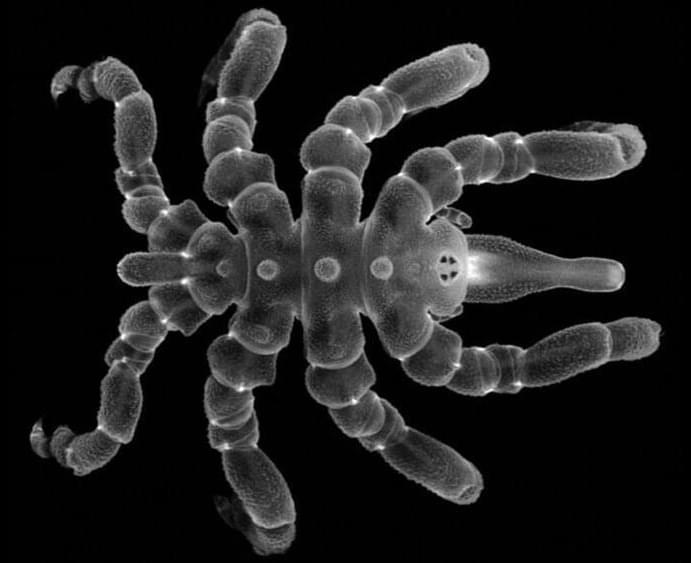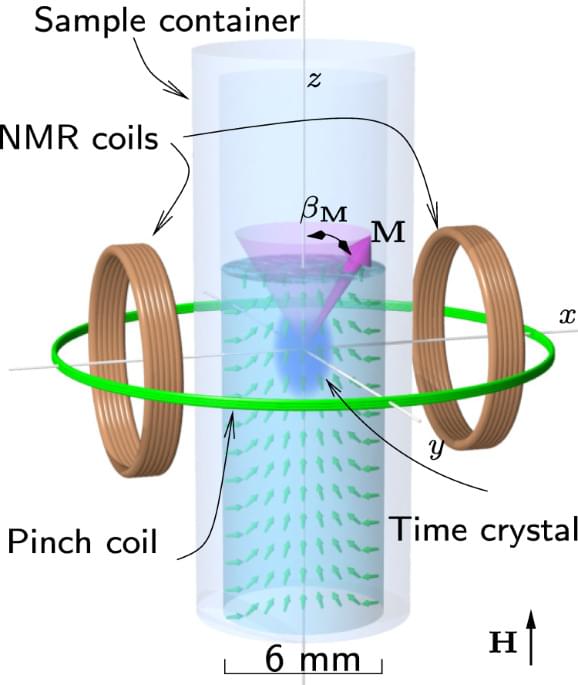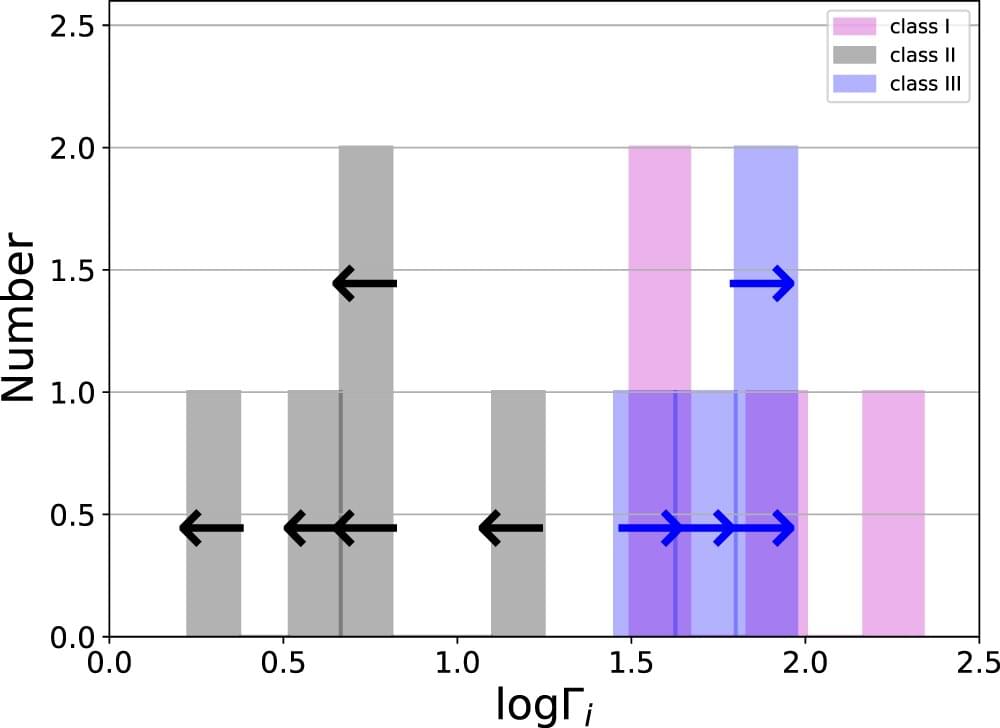Page 3254
Jan 24, 2023
I tried lab-grown meat made from animals without killing them — is this the future of ethical eating?
Posted by Kelvin Dafiaghor in categories: climatology, futurism
Instead a clump of her cells were grown in a lab to create what’s known as “cultivated meat”, a product touted as far better for the climate – as well as the mortal concerns of pigs and cows – and is set for takeoff in the US.
“A harmless sample from one pig can produce many millions of tons of product without requiring us to raise and slaughter an animal each time,” said Eitan Fischer, founder of Mission Barns, a maker of cultivated meat that invited the Guardian to a taste test in an upscale Manhattan hotel. The meatball was succulent, the bacon was crisp and, even to a vegetarian, both had the undeniable quality of meat.
“We got that sample from Dawn and she’s living freely and happily,” said Fischer, whose company has identified a “donor” cow, chicken and duck for future cultivated meat ranges. “This industry will absolutely be transformative to our food system as people move toward consuming these types of products.”
Jan 24, 2023
Fluidic chemical systems can mimic the way the brain stores memories
Posted by Dan Breeden in categories: biological, chemistry, robotics/AI
The brain is often regarded as a soft-matter chemical computer, but the way it processes information is very different to that of conventional silicon circuits. Three groups now describe chemical systems capable of storing information in a manner that resembles the way that neurons communicate with one another at synaptic junctions. Such ‘neuromorphic’ devices could provide very-low-power computation and act as interfaces between conventional electronics and ‘wet’ chemical systems, potentially including neurons and other living cells themselves.
At a synapse, the electrical pulse or action potential that travels along a neuron triggers the release of neurotransmitter molecules that bridge the junction to the next neuron, altering the state of the second neuron by making it more or less likely to fire its own action potential. If one neuron repeatedly influences another, the connection between them may become strengthened. This is how information is thought to become imprinted as a memory, a process called Hebbian learning. The ability of synapses to adjust their connectivity in response to input signals is called plasticity, and in neural networks it typically happens on two timescales. Short-term plasticity (STP) creates connectivity patterns that fade quite fast and are used to filter and process sensory signals, while long-term plasticity (LTP, also called long-term potentiation) imprints more long-lived memories. Both biological processes are still imperfectly understood.
Neuromorphic circuits that display such learning behaviour have been developed previously using solid-state electronic devices called memristors, two-terminal devices in which the relationship between the current that passes through and the voltage applied depends on the charge that passed through previously. Memristors may retain this memory even when no power is applied – they are ‘non-volatile’ – meaning that neuromorphic circuits can potentially process information with very low power consumption, a feature crucial to the way our brains can function without overheating. Typically, memristor behaviour manifests as a current–voltage relationship on a loop, and the response varies depending on whether the voltage is increasing or decreasing: a property called hysteresis, which itself represents a kind of memory as the device behaviour is contingent on its history.
Jan 24, 2023
Sea Spiders Show Unusual Ability to Regenerate Nearly Complete Bottom Halves, Study Finds
Posted by Dan Breeden in categories: biotech/medical, cyborgs

Some young sea spiders can regenerate significant portions of their bottom halves, including muscles, reproductive organs, and the anus, or can function without them, according to a study published on January 23rd in the Proceedings of the National Academy of Sciences.
The ability to regrow body parts is not widely seen, but some species possess this capability. For example, some sea slug heads can regenerate their entire bodies, and sea spiders and other arthropods can regrow parts of their legs. Researchers previously believed that arthropods could only regenerate legs, possibly due to their hard exoskeletons preventing them from regenerating other body parts.
Jan 24, 2023
Nonlinear two-level dynamics of quantum time crystals Communications
Posted by Quinn Sena in categories: evolution, quantum physics
Year 2022 face_with_colon_three
Recent work has reported a realization of a time crystal in the form of the Bose-Einstein condensate of magnons in superfluid 3He. Here, the authors study the dynamics of a pair of such quantum time crystals and show that it closely resembles the evolution of a two-level system, modified by nonlinear feedback.
Jan 24, 2023
World’s Third Richest Person Says He’s Developed “Addiction” to ChatGPT
Posted by Kelvin Dafiaghor in category: robotics/AI
Gautam Adani, the world’s third richest person, is apparently hooked on OpenAI’s ChatGPT. He said so himself, in a post-Davos blog post on LinkedIn.
ChatGPT “was the buzzword at this year’s event,” Adani wrote in the post, caveating that he “must admit to some addiction since I started using it.”
Jan 24, 2023
10 Spooky Objects that could Lurk in the Solar System
Posted by Dan Breeden in category: space

An exploration of ten spooky objects hypothesized to lurk in the solar system.
My Patreon page!:
https://www.patreon.com/johnmichaelgo…
Continue reading “10 Spooky Objects that could Lurk in the Solar System” »
Jan 24, 2023
Tiny ion is crucial for HIV replication, say chemists
Posted by Michael Taylor in categories: biotech/medical, computing, genetics

A study by chemists at the University of Chicago has uncovered a new key step in the process that HIV uses to replicate itself.
The study, published Jan. 6 in Science Advances, used computer modeling to focus on how HIV forms a capsule that carries its genetic material—in particular, the role of a particular ion known as IP6. Scientists had previously suspected IP6 has an important function but didn’t know exactly how it worked.
Continue reading “Tiny ion is crucial for HIV replication, say chemists” »
Jan 24, 2023
ChatGPT found to be capable of passing exams for MBA and Medical Licensing Exam
Posted by Michael Taylor in categories: biotech/medical, robotics/AI
The academic community is growing increasingly concerned about students using ChatGPT for less than honest purposes as it has been found to be capable of not only writing essays for high school students, but passing some exams, such as parts of those used to license doctors and grant MBAs.
In two new papers posted on preprint servers, one team and another researcher independently tested the ability of ChatGPT to take and pass exams. In the first a team with members from AnsibleHealth, Inc., Brown University and OpenAI, Inc. describe testing they did to see how well ChatGPT could do on the United States Medical Licensing Examination (USMLE) and posted their results on the medRXiv preprint server.
In the second, Christian Terwiesch, the Andrew M. Heller Professor at Wharton School of the University of Pennsylvania, has posted a paper on Wharton’s preprint site, describing how he tested the chatbot’s ability to perform on the final exam of a typical Operations Management MBA core course and what he found.
Jan 24, 2023
Study suggests a paradigm shift in our understanding of gamma ray bursts
Posted by Michael Taylor in category: space
Matter outflows in the form of jets are observed in astronomical systems at fast, medium and slow speeds. The fastest jets are highly relativistic, and travel very close to the speed of light. The origin, as well as many properties of the jets, is uncertain. Jet velocities seem to have a bi-modal distribution—some very fast and others slow, with a gap in velocities in between, which has long challenged experts. Bar-Ilan University researchers re-examined the data and have now seemingly solved the puzzle.
In many different galactic and extragalactic systems, emission of matter is commonly observed in the form of jets. The speed at which this occurs greatly varies. Alongside relatively slow jets associated with neutron stars or binary star systems, very fast, relativistic jets are seen at speeds very close to the speed of light. The fastest known jets are associated with a phenomenon known as gamma-ray bursts.
This phenomenon is characterized by an initial flash of gamma rays lasting for a few seconds, in which a strong emission of gamma radiation is visible. It is then followed by an afterglow lasting a much longer period of hours, days and even months. During this epoch, the emission subsequently fades and is observed as lower wavelengths, X-rays, ultraviolet, optical, infrared, and radio frequencies very late in the process.















